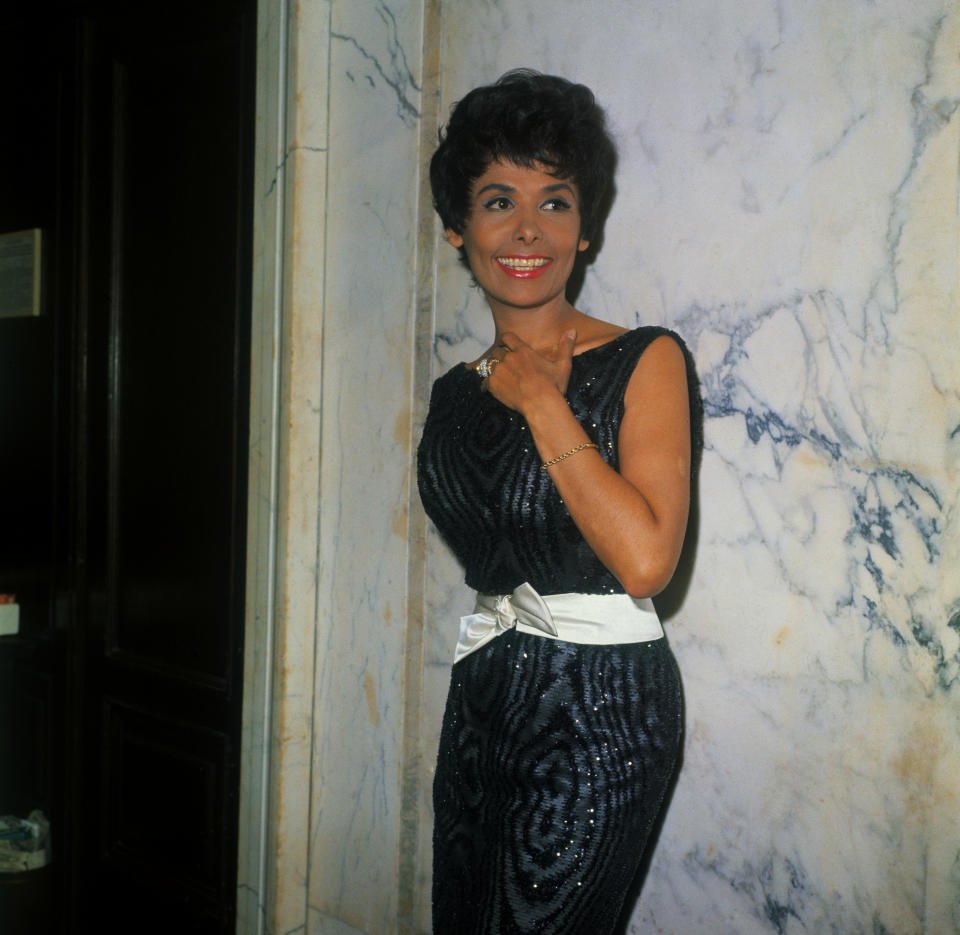Lena Horne Was a ‘Political Fighter’ After Becoming ‘Unhappy’ in Hollywood: Inside Her Struggle
- Oops!Something went wrong.Please try again later.
- Oops!Something went wrong.Please try again later.
Lena Horne knew how to make an entrance. For her debut on L.A.’s Sunset Strip in January 1942, she donned a simple white gown and, without an introduction, stepped from darkness into a single spotlight to sing a wistful standard, “The Man I Love.” Within days, a who’s who of Hollywood’s A-list, including Marlene Dietrich, Lana Turner and Cole Porter, came to bask in Lena’s magic spell.
Less than a month later, MGM announced that it had signed the New York-born African American beauty to a contract. “Before her arrival in Hollywood, Black actors and actresses generally played comic servants and supporting roles,” explained Donald Bogle, author of the new biography Lena Horne: Goddess Reclaimed. Lena’s power lay in her sophisticated beauty, which, Bogle notes, “appealed to Black and white audiences,” coupled with her concise diction and emotional connection with the songs she sang. “There was something about her that was untouchable and irresistible,” he says.

In the 1940s, she would appear in 13 MGM features, including 1943’s Cabin in the Sky, which would be Lena’s only starring role in a movie musical. “She was the first Black woman in Hollywood to be fully glamorized and publicized by her studio, but she became unhappy,” says Bogle, explaining that Lena was rarely asked to act in mainstream movies. “The films would star white actors. They might go to a nightclub and Lena Horne would be there performing.”
By the mid ‘40s, she’d become the best paid Black actor in Hollywood, but Lena felt sidelined. She campaigned to play Julie in the remake of Show Boat, only to be disappointed. “Julie is passing for white but is revealed to be Black.” says Bogle of the character. “But they gave the role to Ava Gardner, a white actress.”
Winds of Change
Lena’s frustration led her to join a variety of activist groups – and got her into trouble with the politicians conducting the era’s Communist witch hunts. The revelation of Lena’s marriage to Lennie Hayton, a white man, only added fuel to the fire of bad press. “They married in France in 1947 and they kept the marriage a secret for three years,” says Bogle. For a time, a blacklist prevented Lena from being hired in films, on TV or in nightclubs.
She distanced herself from Communism, but Lena, who had refused to perform for segregated audiences during WWII, never stopped fighting for social justice. “She was a political fighter,” says Bogle. In the 1960s, Lena spoke at the March on Washington and joined in other pivotal Civil Rights moments.
Her career rebounded when Lena set her sights on performing live instead of in films. In 1957, she became the toast of Broadway in the musical Jamaica. Other successes on stage included the 1981 one-woman show Lena Horne: The Lady and Her Music, which won her a Tony.
Last year, the performer, who died in 2010 at age 92, became the first Black woman to have a Broadway theater named after her. Lena might never have achieved the movie stardom she first sought, but it didn’t matter. “I don’t have to be an imitation of a white woman that Hollywood sort of hoped I’d become,” Lena said. “I’m me, and I’m like nobody else.”

